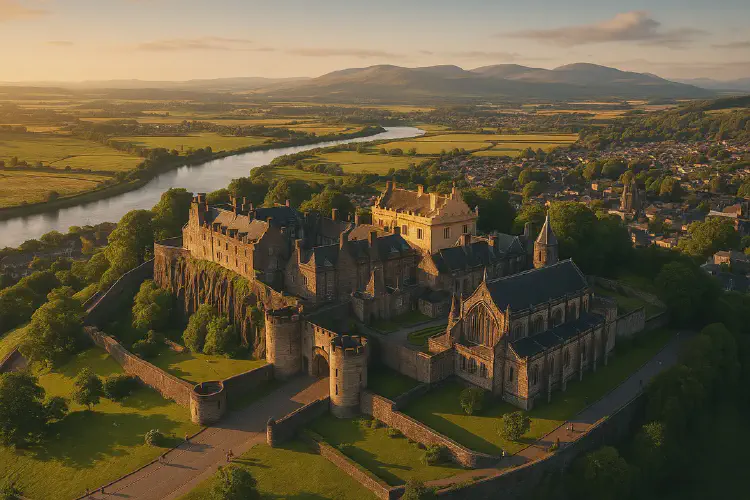Stirling Castle
Stirling Castle is one of Scotland’s grandest and most historically significant strongholds. Its strategic location and royal connections make it a must-visit site for anyone interested in Scottish history.
- Scotland Tours
- 2 min read

Strategic Location
Stirling Castle stands on a volcanic outcrop, guarding the main route between the Highlands and Lowlands. For centuries, it was considered the ‘key to Scotland,’ and many battles were fought nearby, including the Battle of Stirling Bridge (1297) and Bannockburn (1314).
Royal Residence
The castle was a favored residence of Scottish monarchs. James IV, James V, and Mary, Queen of Scots all lived here. The Royal Palace, built in Renaissance style, is one of the finest in the UK, featuring ornate ceilings and lavishly decorated chambers.
Architectural Highlights
- The Great Hall: Completed in 1503, it is the largest medieval banqueting hall in Scotland.
- The Royal Chapel: Built for the baptism of Prince Henry, son of James VI, in 1594.
- Defensive Walls and Towers: Offer sweeping views of the surrounding countryside.
- Restored Royal Apartments: Bring to life the grandeur of the Renaissance court.
Cultural Treasures
The castle houses replicas of the Stirling Heads, carved wooden portraits of monarchs and nobles, as well as the Great Tapestries, recreations of Renaissance designs.
Modern Visitor Experience
Interactive displays, costumed interpreters, and exhibitions make Stirling Castle a living museum. It provides insight into royal life, medieval warfare, and Scotland’s struggle for independence.
Why Visitors Should Go
Stirling Castle is more than stone walls—it’s a symbol of Scottish pride and resilience. Its blend of history, architecture, and dramatic views offers an immersive journey into the nation’s past.